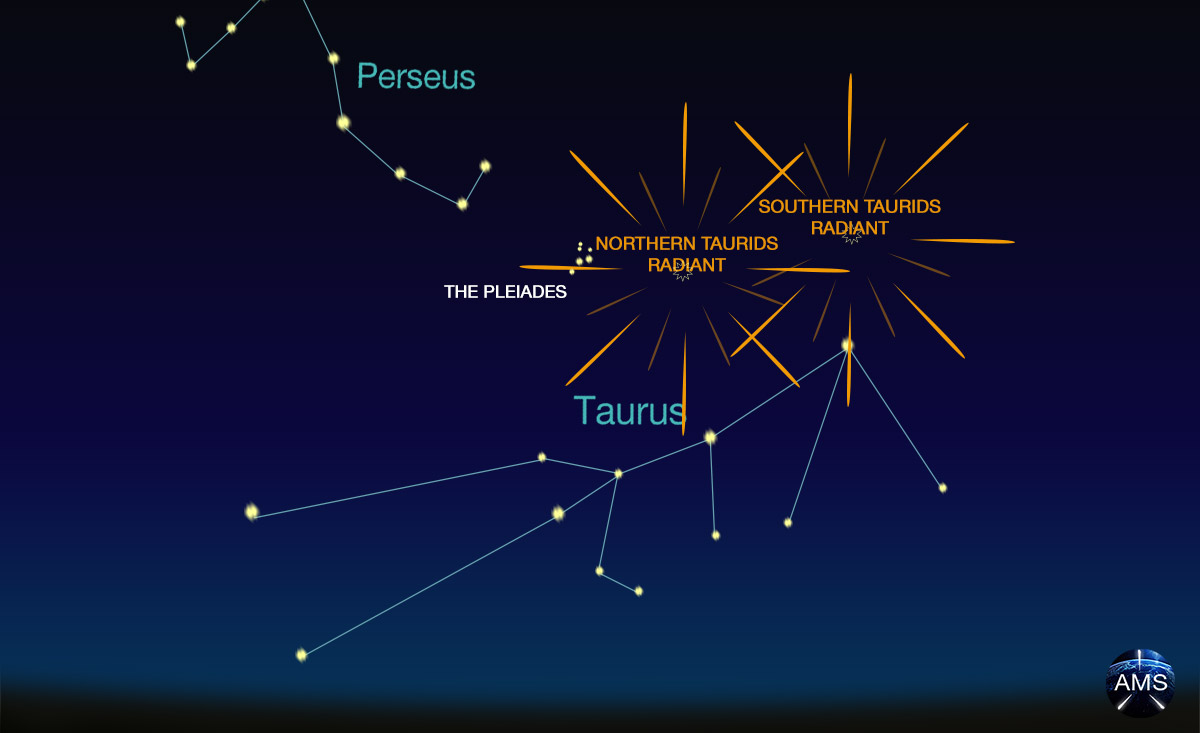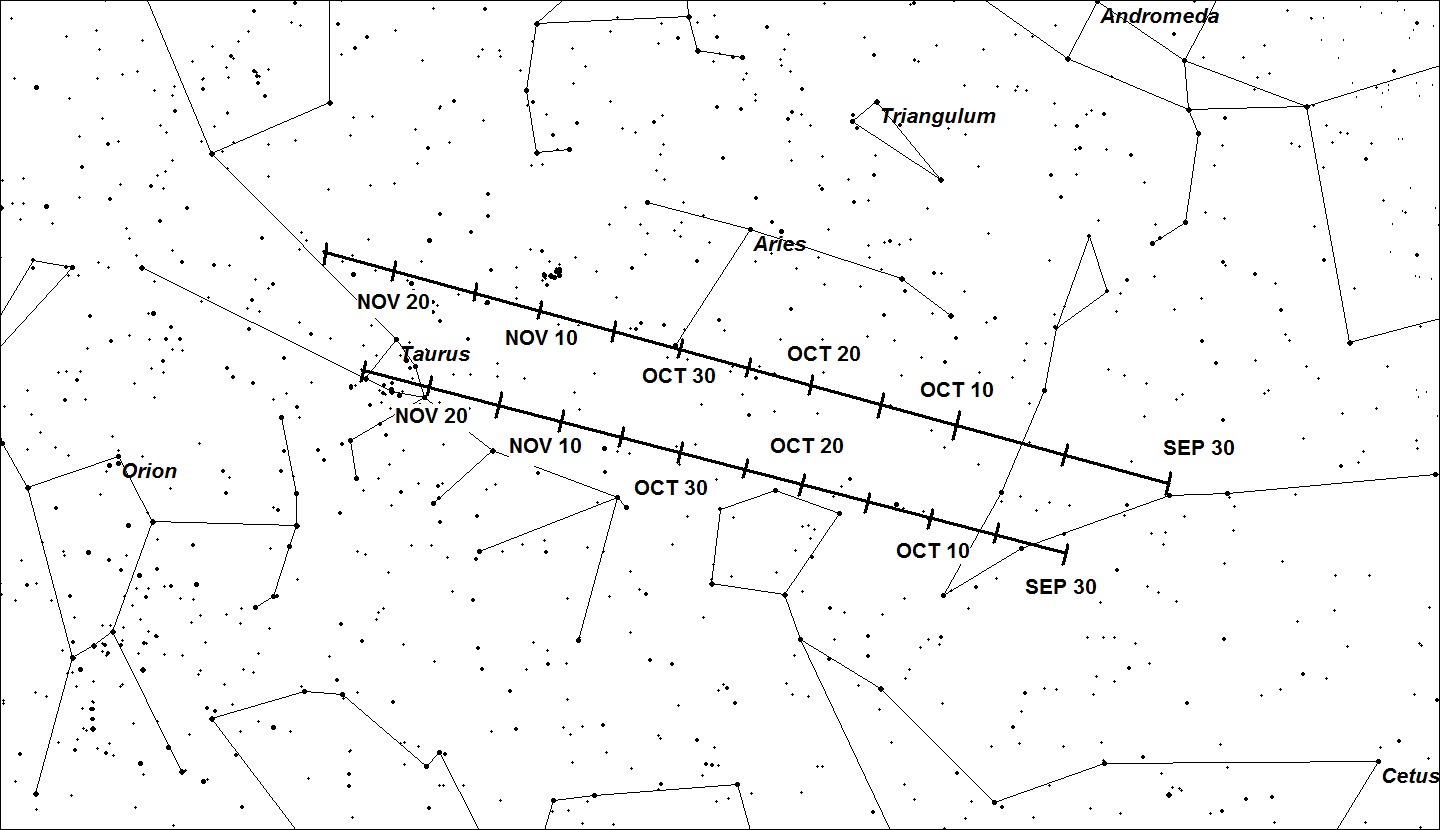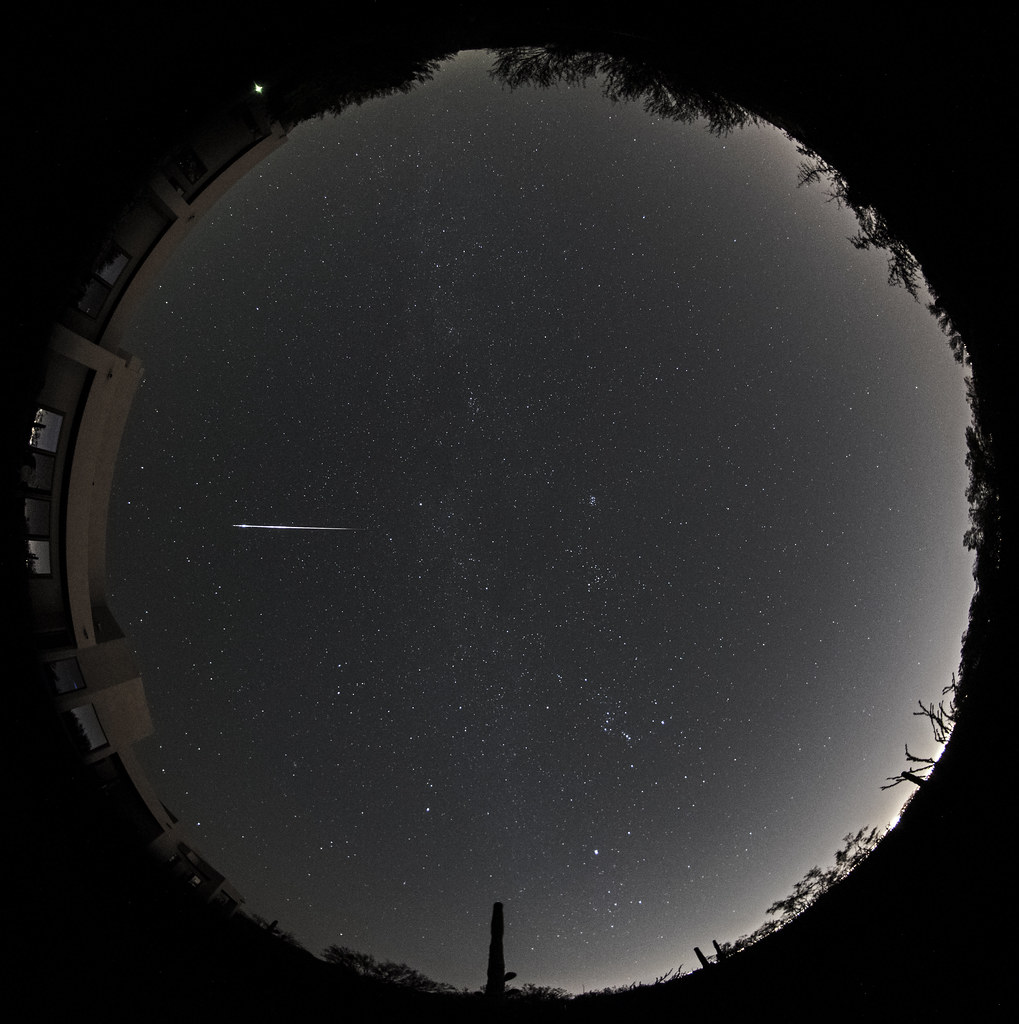
At maximum activity the Taurid radiants are located in western Taurus near the well known star cluster called the Pleiades.
During the last three months of the year the two branches of the Taurid meteor shower are active. The Taurids are not known for their high numbers, rather they are known more for the fireballs they produce. Occasionally there are more Taurid fireballs than normal. The next expected outburst of fireballs is not expected in 2022. Still, some Taurid fireballs occur every year. We invite you to try and witness some of this activity before the nights become bitterly cold.
The Taurids are produced by debris shed by comet P1/Encke. The earth passes through the debris field of this comet during the last quarter of the year. We pass through the densest part of this field during the last week of October and the first week of November. This is when activity is greatest. Due to planetary perturbations from Jupiter, the debris field from comet P1/Encke has been sorted into two main streams known as the Northern Taurids and the Southern Taurids. The Southern Taurids are the strongest of the two and actually has three shallow peaks of activity during its duration. The first occurs near October 10th, the second near November 1st, and the last near November 15th. The Northern Taurids peak near November 3rd. The combination of the two peaks in early November make the period in late October and early November the best time to see this activity.
The Taurid radiants are located opposite the sun and are visible most of the night. The illustration above shows the approximate position of the above the eastern horizon at approximately 9pm local daylight saving time for viewers located in mid-northern latitudes during late October and early November. These radiants actually start out in eastern Pisces in early October and spend most of the month of October crossing the constellation of Aries. Some astronomers have called these meteors the October Arietids. They only reach the border of Taurus near November 1st and spend their remaining time crossing this constellation. Activity in December is low and difficult to sort from the several other stronger sources in the area.
 Approximate radiant drift for the Taurids. North is up so the upper track is that of the Northern Taurids and the lower track that of the Southern Taurids
Approximate radiant drift for the Taurids. North is up so the upper track is that of the Northern Taurids and the lower track that of the Southern TauridsAlthough Taurid meteors can be seen all night long from the northern hemisphere, they are best seen when the radiants lie highest in the sky. This occurs between 0100 and 0200 local daylight saving time. This time is basically the same across North America. For observers in the southern hemisphere, the timing is basically the same yet the Taurid radiants pass lower in the northern sky which reduces the activity. When observing during the peak activity period in late October and early November one can expect to see approximately 5-10 Taurid meteors per hour when the radiants lie high in the sky. This assumes a rural location under a moonless sky. Under urban conditions or with a moon in the sky, rates will be less. While the Taurids do produce fireballs (meteors brighter then everything in the sky except the sun and moon), most of the activity will be faint. A notable feature of these meteors are that they travel slowly compared to most meteor showers. They often last up to a second while most meteors are sub-second streaks. They are also known to fragment before totally disintegrating. Taurid fireballs can also be colorful with orange being the most common color associated with these meteors. The slower velocity also means they are photogenic. The slower movement allows more photons to fall upon the image sensor. Unfortunately the low rates means that many frames must be taken in order to capture any meteors.

Our organization is interested in receiving visual reports of the Taurids and other meteor showers. We ask that you try and view for at least an hour so that a good sample can be obtained. Information on visual observing can be obtained at: https://www.imo.net/observations/methods/visual-observation/
We are also interested in any fireballs you may witness. If you happen to see one of these bright meteors, we invite you to fill out a fireball report at: please fill out an official fireball report.
 American Meteor Society
American Meteor Society
Thank you for your sharing this fascinating research with the world. Our world being a very small group in a very small Iowa county!
Fabulous Work From Your Side ! Keep Up With The Good Work; And Keep The World Posted.
I am new to the whole meteor shower and constellation world. All the information that i have read has been greatly helpful. I appreciate all you are doing in assisting me in my research. I will gladly post all my findings back to you. Thanks again.